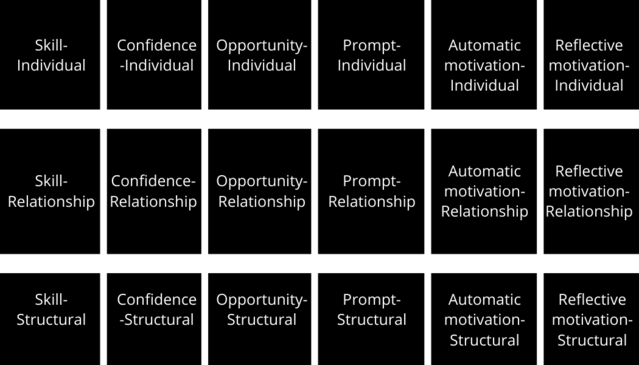Motivation
The System to Overcome Every Physical Activity Barrier
Part 2: Everything you should know for when it's hard to act on your intentions.
Posted September 23, 2020
In my last post, I described a behavior change system. This system describes how your cognitions, social networks, and structural environment all influence the determinants of behavior.
The determinants were capability, motivation, and opportunity. If you have a weak link in your system, you will experience more barriers and will be less likely to act on your good intentions to be physically active.
If you’re like most people, you don’t struggle to see the value of doing more physical activity. Not acting, or not acting consistently, puts you in a state of ambivalence, wanting to change and at the same time not changing.
If you’re stuck in ambivalence, it’s not your fault. It’s your system that is working against you, preventing you from executing your plan. To stay consistent and make long-term changes, we need to make your system work for you.
The Behavior Change System
In my last post, I posed six questions to help you determine what best described the barrier you were experiencing. Each of these questions addresses a determinant of behavior. When you think about why you did not act on your good intentions to be physically active, what statement best describes your barrier?
- The task was too hard, I was not fit enough to do it (skills).
- Despite having the ability, I lacked confidence that I could achieve the goal (confidence).
- I did not have access to the resources needed to do the behavior (opportunity).
- I did not remember to do the behavior (prompt).
- I did not set a plan for when and where to do the behavior or I did not have a plan to overcome barriers (reflective motivation).
- I was more inclined to do something else (automatic motivation).
Issues with capability and opportunity will either make the behavior impossible or make you more reliant on motivation. For example, if you did not have a gym membership (opportunity), you could not go to the gym. The behavior does not happen.
If you had a gym membership but the gym was 20 miles away, you will need more motivation than if the gym was 1 mile away. Capability and opportunity both influence the need for motivation.
These determinants are affected by three levels of influence. The individual level, the relationship level, and the structural level. Respectively, these sources of influence are your thoughts and beliefs, your social networks, and your built environment. The combination of the sources of influence and determinants makes up your system.
We can then identify the weak link in your system as being in one of 18 categories. We can also think about how we might strengthen any of these 18 categories (see image below) to make your system work for your good intentions rather than against them.

Examples of Barriers and Solutions
Say you intended to go for a walk in the morning before work. Think of three scenarios where you don’t:
- Scenario 1: You set your alarm but when it goes off, you hit snooze. Then you hit snooze again. You miss your walk. You have a weak link at the automatic motivation-individual level because you would have rather slept than go for a walk.
- Scenario 2: You forgot to set your alarm, so you do not wake up. You have a weak link at the prompt-individual level.
- Scenario 3: You got up to go for a walk and your significant other was awake. They ask you to watch the show you fell asleep to last night. You do that instead of walking. You have a weak link at the automatic motivation-relationship level.
Think about where the weak link is and what is working against you. Then, flip the script to make the sources of influence work for you. Upon examining each of these scenarios, there are things you could do to make sure this problem does not happen again.
- Scenario 1: Preplan what you will tell yourself when the desire to sleep more happens. Remind yourself of why physical activity is important and think of how good you will feel when it is done.
- Scenario 2: Set a reoccurring reminder on your calendar to set your alarm for the days you want to walk. Or ask your significant other to also set their alarm.
- Scenario 3: Tell your significant other you would prefer to watch the show after your walk. Invite them to join you.
Next Steps
Changing behavior can be a fundamentally unstable and unsteady process; you should expect a fair share of lapses in self-control and relapses into old behaviors. When this happens, don’t fret; you are not a failure. Far from it. Rather, you have gained valuable information. You can find out where the weak link in your system is. Just like an engineer, you find out what is wrong and fix it.
In the next few posts, I will discuss how you can repair your system. I will cover capability (skill and confidence) and behavior change techniques that can help to make the sources of influence work for you rather than against you.
If you’re keen on getting strategies quickly, here is a link where you can gain access to a customized barriers-and-solutions survey.




